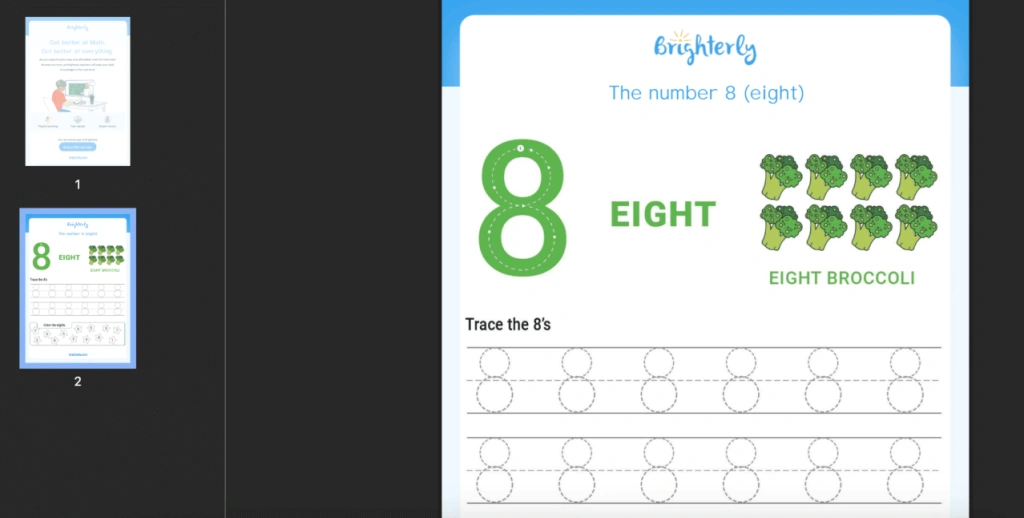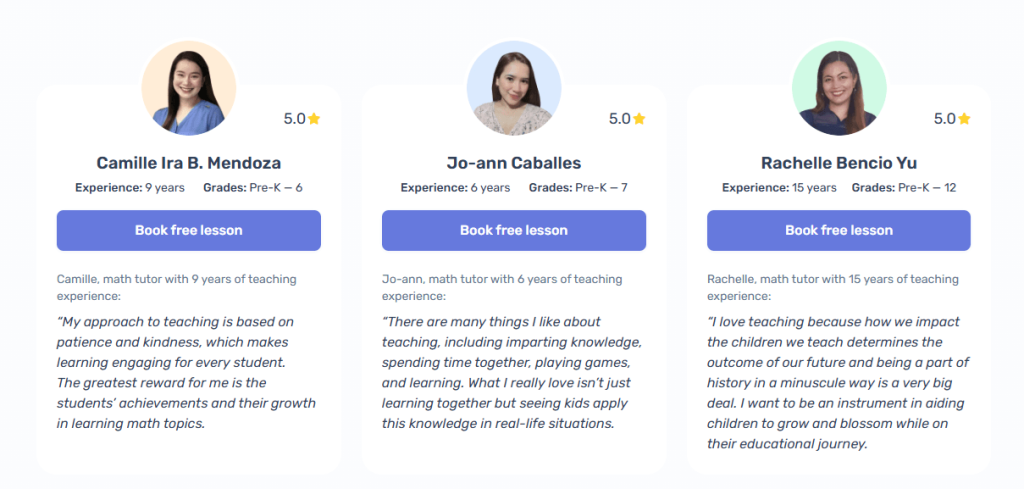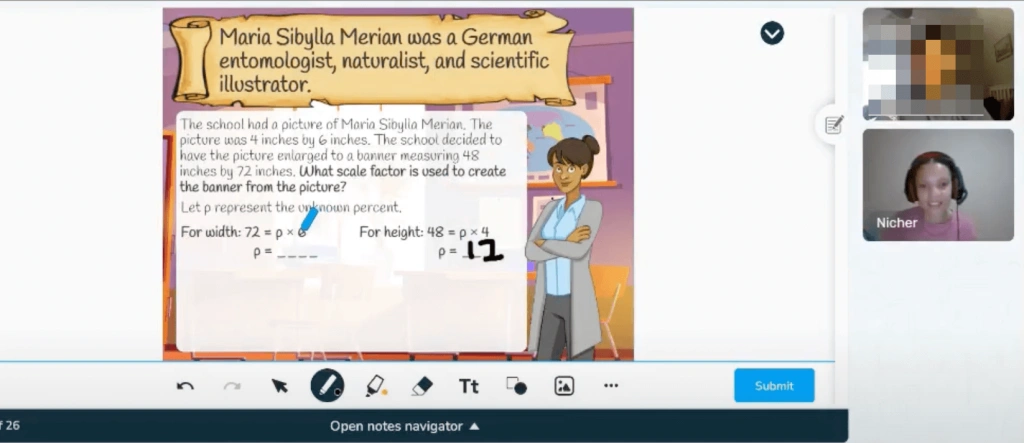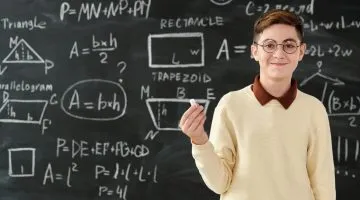ADHD and Math: How to Help Kids
reviewed by Camille Ira B. Mendoza
Updated on November 14, 2025
Remember yourself at the age of 7, trying to memorize at least a tiny part of the multiplication table. Back then, the whole math seemed like a mess, right? Now think about ADHD students who are in much worse conditions.
So, can ADHD and math work together? No, not really. As someone who has been a practicing math tutor for years, I work closely with special children and have developed a range of techniques to help them. For now, I’m ready to share them in this article. Read on for the most valuable insights.
Key points:
- ADHD does impact children’s learning by causing difficulties with concentration and following patterns, as well as provoking impulsive behavior.
- For those wondering how to learn math with ADHD, some of the most effective methodologies include using visual aids, keeping sessions short and engaging, and incorporating hands-on education.
- Hiring a math tutor for ADHD students ensures that a child will receive sufficient attention, along with personalized recommendations. Brighterly stands out among other e-learning platforms due to its highly experienced tutoring team.
Why is math hard for ADHD kids?
Math is challenging for children with ADHD because they often struggle with maintaining focus, memorizing material, and following sequential activities. So, the logical question is, “Are people with ADHD bad at math?” – and no, that’s a huge misconception. However, ADHD symptoms do impact working memory function and the brain’s ability to hold and manipulate data. Thus, children fail to pursue a multi-step process for solving math problems.
What we should all accept is that the brains of neurodivergent people work differently. They follow the “out of sight, out of mind” pattern, which literally means struggling to understand the logic behind non-existent objects. Value, negative numbers, and variables are just a few common stumbling points for them. That’s one of the core reasons why ADHD math problems are widespread even in elementary school.
Certainly, special problems require specialized learning techniques and solutions. And for sure, a personalized approach is the best way to grasp and match all of their unique needs.
An expert delves into how ADHD can impact studying:
“Children struggling with math could have a vision problem, making it physically difficult for them to understand and process the information. We need over a dozen visual skills to see and learn!”
Alternatively, there are some other consequences resulting from their poor sight:
- If a child has an eye-tracking problem, they may re-read the same number repeatedly or skip around on the page, which can lead to poor comprehension.
- If their eyes don’t work together, their brain can suppress the vision in one eye.
- Under severe conditions, they can even experience deficits on a processing level. It means a child will be unable to understand the spatial notions that numbers and math concepts represent.
Does ADHD affect math skills?
Besides, children with this condition are often unable to retain attention and execute complex tasks, such as problem-solving or organization. For some families, managing ADHD may also involve exploring treatment options such as Same day Adderall Prescription, under medical guidance, to help improve focus and learning consistency.
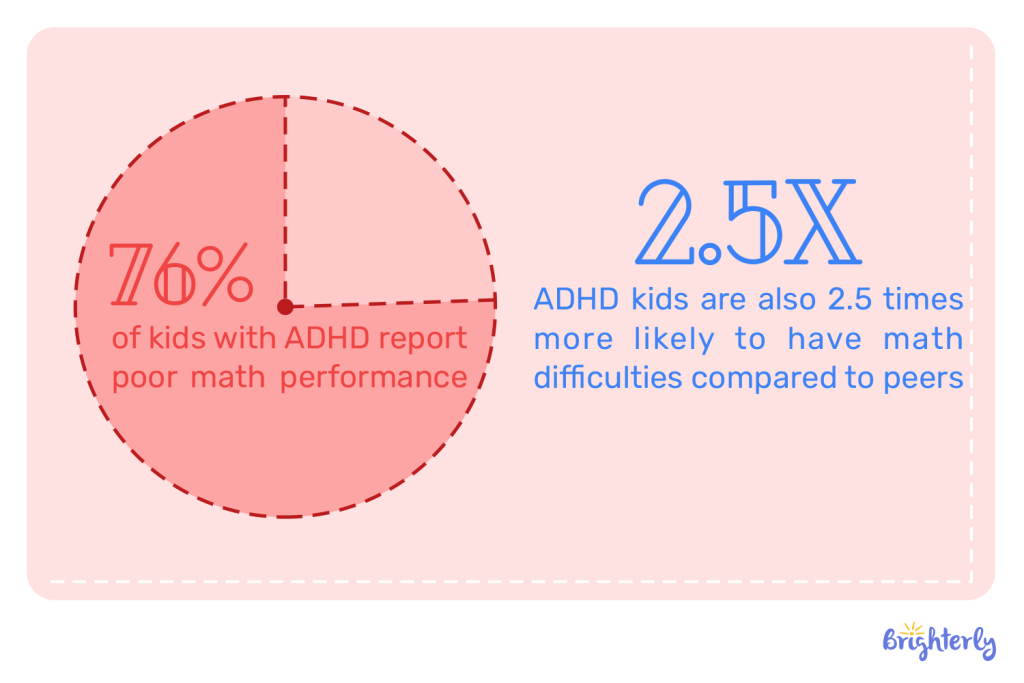
These were the most basic concerns. Now, let’s get into detail, exploring what other ADHD learning consequences they can experience.
ADHD and math difficulties: Frequent challenges
- Difficulties concentrating on math problems. Some tasks can be too complicated when teaching math for kids with ADHD. When dealing with something they cannot easily understand, their brains can decide to switch attention to something more familiar. It’s a natural response, so don’t blame your kid for it.
- Trouble remembering math facts and formulas. Particularly when they are complicated or when you need to use multiple similar formulas. Mix up the tasks of different difficulties — that’s the solution.
- Making careless mistakes like “5+7=11” or “-29+19=10”. These tasks require concentration on positions of numbers and positive and negative numerical values. Attention-related issues are some of the most common ADHD math problems.
- Difficulty staying organized with math homework. It can be too hard to solve dozens of math problems in one sitting. Your child may complete one block of questions and suddenly get distracted by something else.
- Taking longer to complete math assignments. At times, it may take a child a bit longer than others to do a particular task. To solve it, just set realistic deadlines right away.
Note: Don’t associate neurodivergence with bad habits. It wouldn’t be right to say that students with ADHD struggle in math — it should be considered a difference in learning style, not a deficit. They can still learn and understand even more math. You just need to find the personalized approach that suits your kid.
Can someone with ADHD be good at math?
Are kids with ADHD good at math? Yes, indeed. In fact, many people with this condition are strong mathematicians. If your child is naturally interested in math and STEM subjects, they may end up showing some of the best results in class. But even if they don’t like hard sciences, they still can succeed in them. It just will take more time to build their confidence.
Your kid is a creative genius. Please, remember about it
You should also account for other natural inclinations:
- People with ADHD often excel at problem-solving. This can be a huge asset in math. In fact, it’s one reason you’ll often hear the phrase “ADHD good at math” when the right support and learning methods are in place.
- A good math tutor for ADHD kids will emphasize the role of repetition in teaching math. While some students find it difficult to adhere to a rigid logical flow, others enjoy using it in their daily activities.
- Similarly, some children may have a natural affinity for STEM sciences. It can become an advantage for those who teach children with ADHD math. However, don’t go overboard with it; as the kid may lose their natural interest.
By now, we already have a fairly good understanding of the ADHD condition and its influence. Now, it’s time to move on to the strategies for better academic performance. But first, let’s grab an expert tip along the way.
How to learn math with ADHD? Here are some clues:
“According to Technium Science, audiovisual stimuli facilitate information processing and memorization, which makes smartphone applications an effective learning tool for children with ADHD.”
8 tips of how to learn math with ADHD
- Break the information into small chunks
- Set your focus on understanding, not memorizing
- Implement hands-on learning
- Use visual aids
- Outline time for short breaks and active movements
- Create a dedicated study space
- Reward the kid
- Use the help of a teacher who has experience working with neurodiverse kids
How to learn math with ADHD: Break the information into small chunks
The smaller, the better. When teaching math to ADHD students, switch to the next part of the task only after ensuring they understand the previous information. A traditional school-like 45-minute continuous teacher’s monologue won’t suit the needs of these kids.
Math for kids with ADHD: Set your focus on understanding, not memorizing
Math for ADHD students should be palpable. Once they pay significant attention to the logic behind the task, they will be able to solve similar problems. Some parents rush to cover more topics, which is a huge mistake. Math for kids with ADHD should always be taught in a steady flow, meaning you cannot move to the next topic until they have understood the logic behind the current one.
Math for ADHD: Implement hands-on learning
Use interactive content such as counters, blocks, or even pictures to represent concepts. It can make math more tangible and engaging. Writing and drawing help to solidify the knowledge.
Using math worksheets for ADHD students is another excellent idea. Typically, these sheets include colorful contents that help children stay focused. For example, Brighterly has loads of math worksheets — all for free. Let me show you just one example:
How to teach math to an ADHD child: Use visual aids
Remember, I briefly mentioned the “out of sight, out of mind” concept at the beginning? You should figure out how to make everyday objects like bottles of water, flowers, or pens simple yet effective visual aids. You can ask the child to count some routine objects, use them to teach shapes, or demonstrate simple addition and subtraction. Implement this practice for kids to learn math with ADHD.
How to learn math with ADHD: Outline time for short breaks and active movements
This approach stands out among other tips for teaching math to children with ADHD. Since your child is experiencing severe difficulties with concentration, regular breaks mean better focus in the long run. If you don’t do it, the kid will get distracted after 10-15 minutes.
Allow them to spin, use a fidget spinner, or engage in any other activity they enjoy. This way, you turn their restlessness to your advantage. It will help a child with ADHD struggling with math.
How to teach math to children: Create a dedicated study space
Minimize distractions by maintaining a clutter-free environment to ease math for ADHD students. Let your kid have their own table for studying. For their studying space, think about implementing other tools like wobble cushions, standing desks, or small fidget tools (like a squishy ball). It will bring movement into their learning process, which is a huge plus.
Math for ADHD students: Reward the kid
Whenever one asks how to teach math to an ADHD child, I always stress this one crucial point: these kids NEED appraisal more than anyone else. So, always celebrate their positive actions and achievements, big or small! It will keep them motivated and engaged.
Plus, good motivation releases dopamine and creates a positive connection. That way, when they think about math, they will associate it with a great time and the rewards that you’ve given to them.
Math for ADHD: Use the help of a teacher
Addressing a math tutor for ADHD students has one huge benefit: they work closely with your child, analyzing their needs and addressing their exact weak points. Without a doubt, children with ADHD have special requirements, which teachers will reflect in their schedules.
Additionally, any successful lesson aimed at teaching math for ADHD should incorporate several other features. Let me quickly go through them.
How to teach math to children: Principles of successful lessons
- Inclusion of creative, non-trivial tasks
- Using mnemonics
- Incorporating easy games
- Adding storytelling to link math concepts to stories
- Visualizing the learning process and using metaphors linked to real-life concepts
I’m pleased to say that I know a specialized e-learning resource that includes all these approaches to teaching children with ADHD math. It’s the Brighterly math tutoring platform — your helping hand with a well-organized and friendly environment. Here are the primary teaching principles they rely on.
Extended training of all the staff members
All Brighterly math tutors undergo qualification training in kids’ psychology. It means they are well-aware of the peculiarities of ADHD learners and know how to address them correctly. Additionally, lessons are held only one-on-one, meaning that tutors can devote all their attention to your child and take note of any mood swings or other changes. When we discuss inclusive learning, such an approach is much more productive than studying in groups.
At this point, I’d like to mention that Brighterly math tutoring services have earned numerous compliments on threads discussing ADHD and math “How to help kids” Reddit reviews. It also became a big hit at Trustpilot, earning a 4.6 score. Here’s just one feedback to exemplify its value:
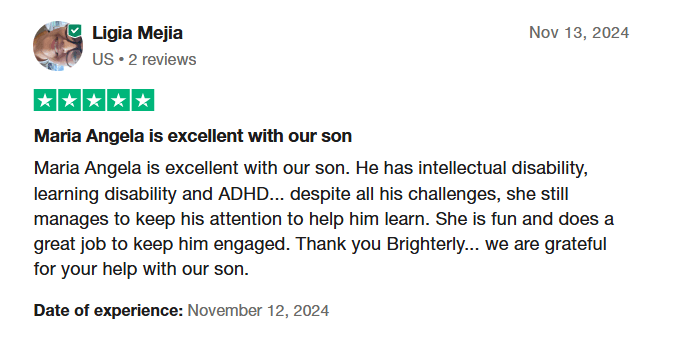
Aligning with Common Core and STEM principles
Brighterly will always deliver a math program based on Common Core principles. This literally means the best math for ADHD, which enables prompt exam preparation and helps achieve good school marks.
Plus, any math class here is designed with STEM rules in mind, incorporating more practical tasks and real-world contexts to benefit your child. Finally, they will be able to explain where and how to apply the knowledge.
Tailored schedules
Like any ADHD math tutor, Brighterly will ask your child to take a diagnostic assessment to determine their level. However, unlike most other tutors, it will keep a constant track of their learning performance, adjusting the schedule as needed. That’s why any teacher here is more than pleased to create strong bonds with pupils and get to know their fears, expectations, and stage of cognitive development.
That’s it on Brighterly’s strategy for how to learn math with ADHD. However, I have to share one more pro — it’s their affordable price. What I like about this site is that it’s absolutely transparent regarding payments, with no hidden fees attached. Therefore, you can plan your budget in advance and stick to it.
Math strategies for students with ADHD
How to learn math with ADHD: Make lessons shorter
The best strategy to reveal an ADHD math genius with your child is to keep them focused on practice and try shorter classes. Instead of trying to study for 120 minutes continuously, split your 2-hour lesson into six 25-minute sprints with five 10-minute breaks.
ADHD and math difficulties: Manage their impulsivity
Are people with ADHD good at math? Well, they can be once they manage to control their impulsivity. Incorporating controlled movements can be a good solution for that in a learning environment. For example, you can use fidget toys, chair bands, or any other object that allows them to safely release energy.
Here are some other math and ADHD tips in this regard, as shared by Dr. Ray Christner, doctor of psychology, NCSP (nationally certified school psychologist), ABPP (American Board of Professional Psychology):
“Children with ADHD often benefit from interactive and hands-on learning experiences.”
Dr. Christner refers to the study called “Can abacus course eradicate developmental dyscalculia?” to underpin his claim. The results of this research have shown that no children in the classes using an abacus course were diagnosed with developmental dyscalculia (a specific mathematical learning disability), whereas approximately 6% of students in the control class (not using the abacus course) received a diagnosis.
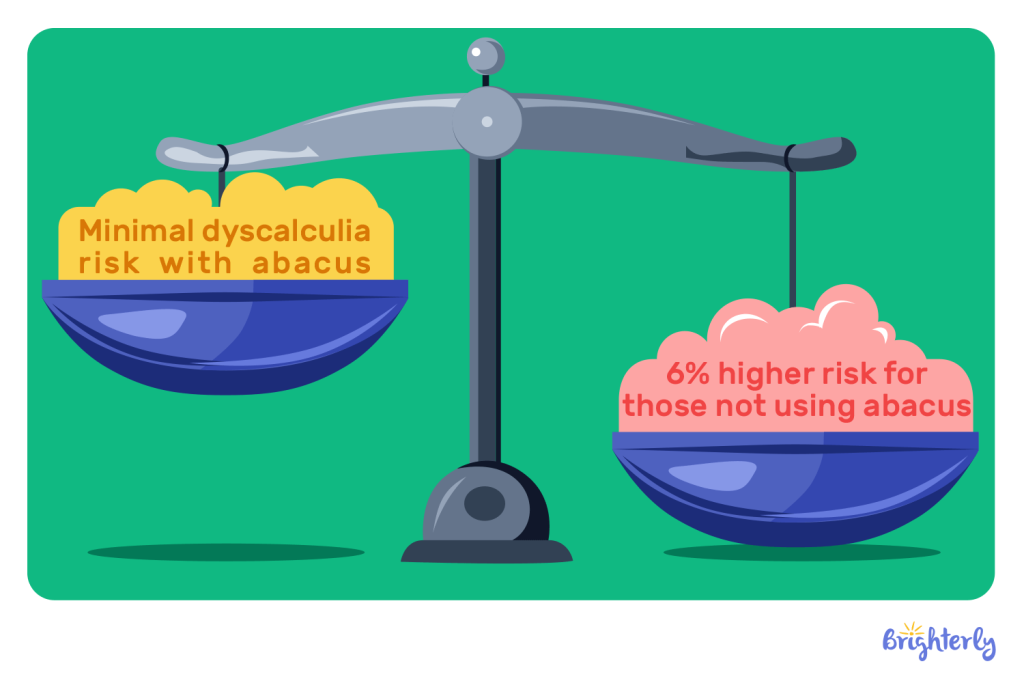
This research found that those taught with an abacus demonstrated a positive difference in mathematics computation skills and spatial short-term memory.
How to teach math to an ADHD child: Use visuals
Ask a kid to visualize the task. Math for kids with ADHD should be presented as clearly and concisely as possible. Use numbers, sketches, and even the child’s favorite computer and offline games to visualize the problem’s conditions and logic for solving it.
You can also use colors to boost the kids’ focus. Here’s one practical example: teaching math for ADHD students can be challenging because they often miss and mix plus-minus operation signs. So, before they start work on math problems, ask them to color key operations. For example, you can use green for addition signs, pink for multiplication, orange for negative numbers, and so on.
Here are some extra insights from our expert:
“Children with ADHD may experience auditory and visual processing problems that affect their ability to effectively concentrate, focus, and remember, leading to difficulties in learning math specifically.”
Another thing I’d like to pinpoint regarding ADHD and math difficulties is that children with the condition cannot properly perceive long strings of text. So, once you turn a task into tangible pictures, they can better understand what’s required. Yes, it will take more time, but that way, you have a higher chance that the kid actually solves it on their own.
Teach children with ADHD math: Apply multisensory methodologies
How to teach math to children with ADHD? Multisensory methods can be your clue. The trick with them is that they engage more than one sense at a time. For math, this means not just telling kids how to do something (which involves the auditory part) but also showing an image (by creating visuals) and letting them physically manipulate objects (kinesthetic part).
Conclusion: How to teach math to children with ADHD
Remember that kids with ADHD CAN learn to solve math problems (they also SHOULD do so!). Despite everything, they can excel in STEM activities and achieve academic success, just like many adults with ADHD who thrive in technical careers. Then, why is math hard for ADHD? The main reason is that these special kids simply don’t get enough time to understand it properly. Each child with the condition is unique, and they also have educational rights to individualized support that fosters their success.
That’s why over 200,000 parents have already chosen Brighterly! This e-platform has dozens of tutors who specialize in working with neurodivergent kids. What you get here is a personalized math study plan that can be easily modified during training to match exact needs.
Ready to try? Request a free math demo lesson with Brighterly to test all the benefits yourself!






